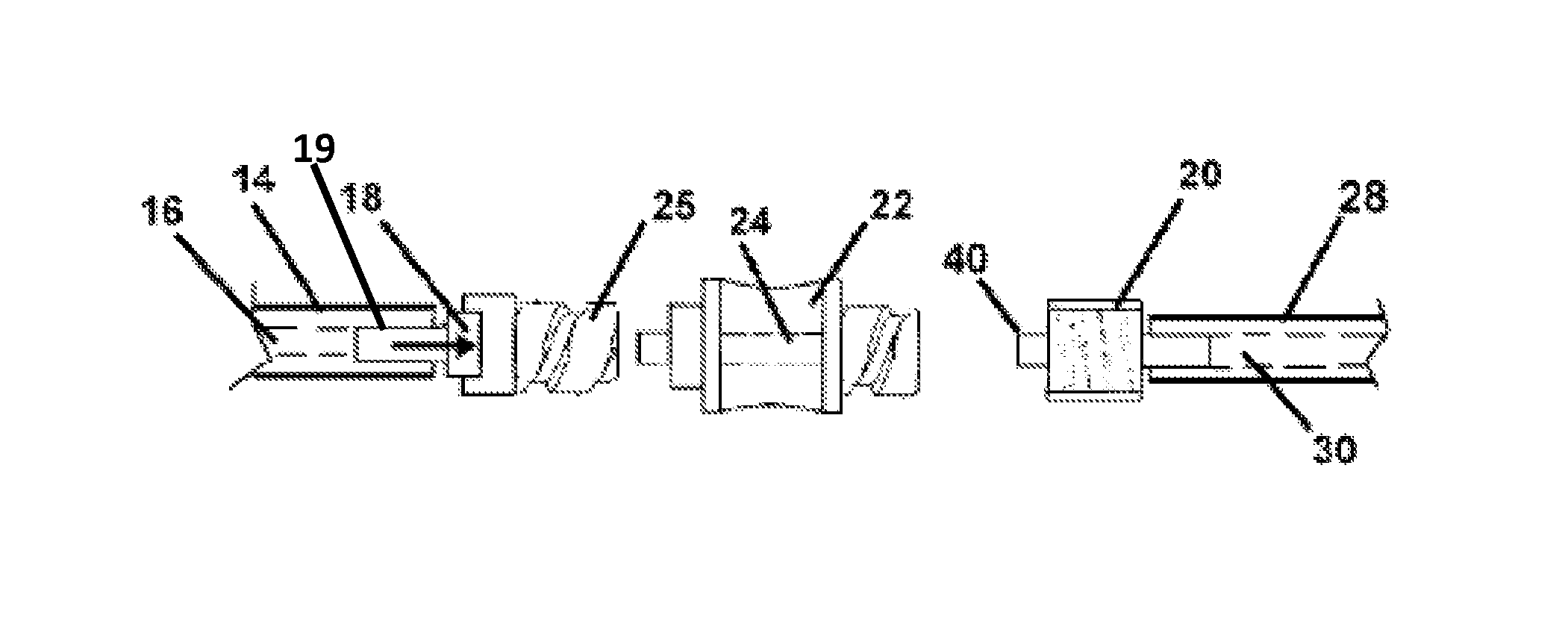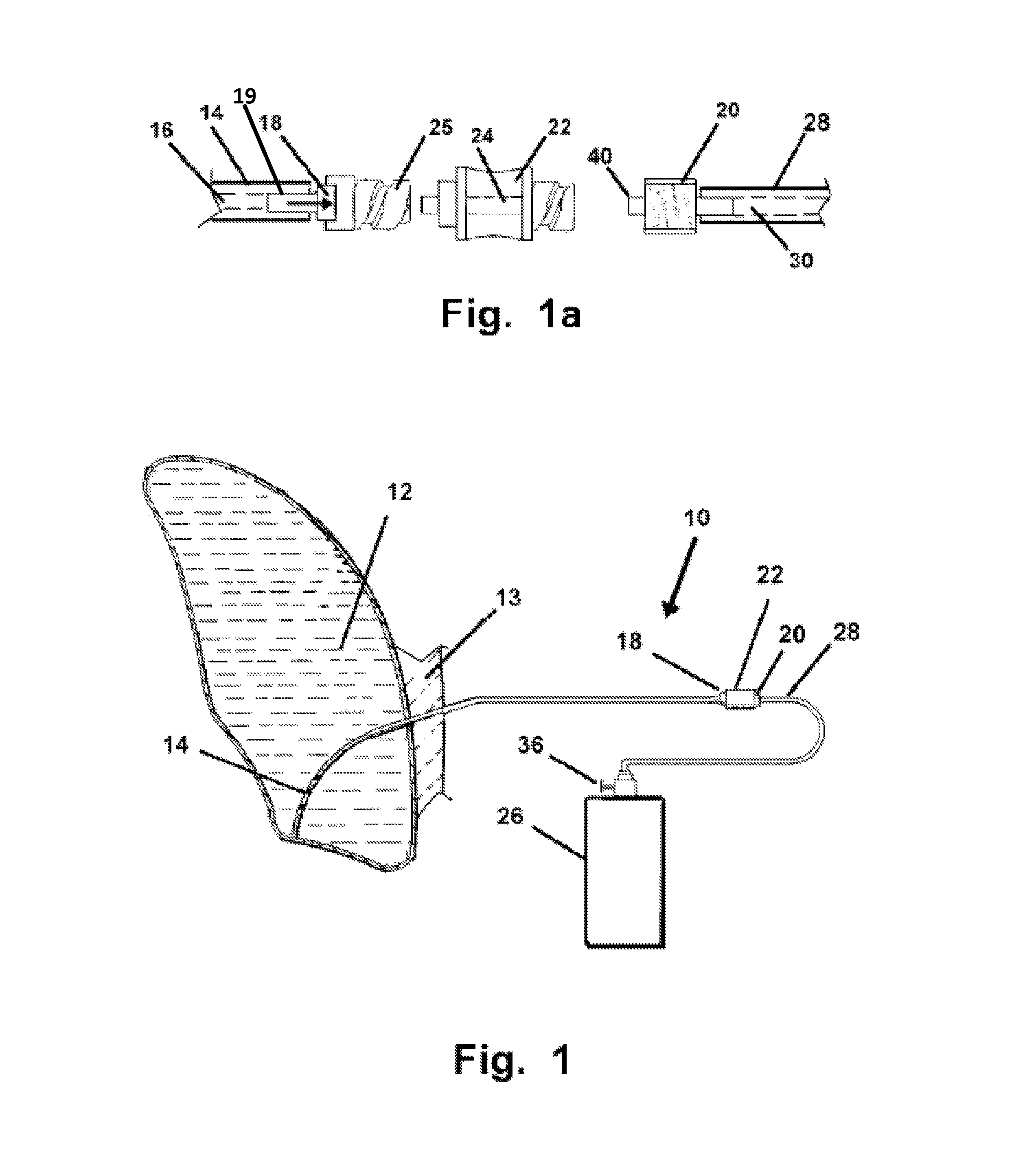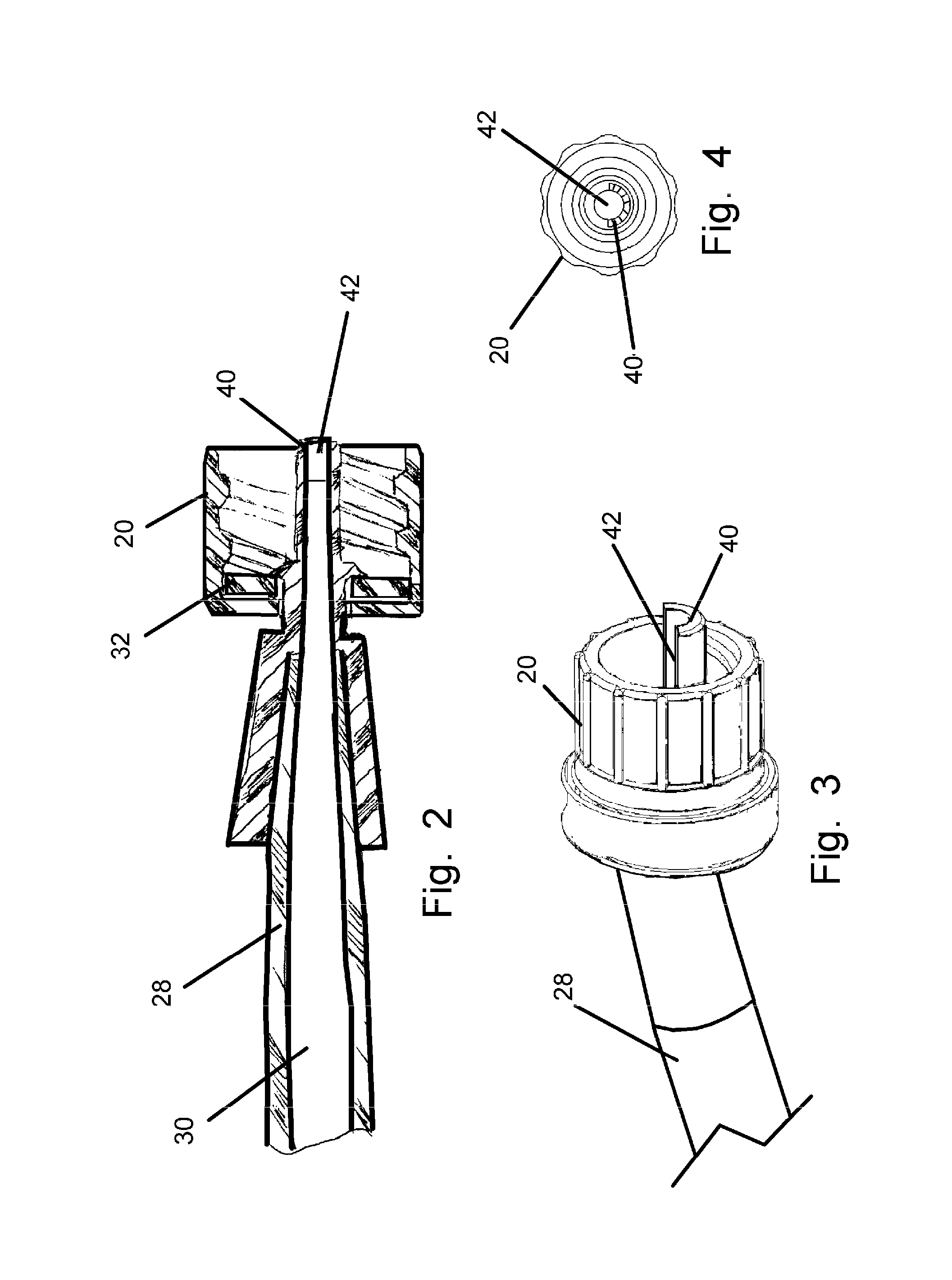Method and apparatus for treatment of pleural effusion
a pleural effusion and pleural fluid technology, applied in the direction of suction pumps, other medical devices, suction devices, etc., can solve the problems of deterioration, increased fluid accumulation, and increased pain in patients, and achieve the effect of convenient use by trained and untrained users
- Summary
- Abstract
- Description
- Claims
- Application Information
AI Technical Summary
Benefits of technology
Problems solved by technology
Method used
Image
Examples
Embodiment Construction
[0034]Referring now to the FIGS. 1-4, the device 10 and method herein drains fluid from pleural effusions 12 and other points of ongoing fluid accumulation in the body of a patient.
[0035]In use, the device 10 is engaged with an operatively placed chest tube 14 having a first end configured for sealed communication with a catheter 28 having a communicated negative pressure therein, and thereby cause a draining of fluid from the pleural effusion 12. The chest tube 14 is configured to communicate operatively through the patient's chest wall 13. Fluid entering the distal end of the chest tube 14 is communicated into an axial cavity 16 in a sealed communication at the proximal end of the chest tube 14 with negative pressure emanating from a catheter 28 also in sealed communication with the axial cavity 16 by way of the check valve 18.
[0036]The pressure activated check valve 18 is in a sealed engagement in the pathway formed by the sealed communication between the axial conduit 30 of the ...
PUM
 Login to View More
Login to View More Abstract
Description
Claims
Application Information
 Login to View More
Login to View More - R&D
- Intellectual Property
- Life Sciences
- Materials
- Tech Scout
- Unparalleled Data Quality
- Higher Quality Content
- 60% Fewer Hallucinations
Browse by: Latest US Patents, China's latest patents, Technical Efficacy Thesaurus, Application Domain, Technology Topic, Popular Technical Reports.
© 2025 PatSnap. All rights reserved.Legal|Privacy policy|Modern Slavery Act Transparency Statement|Sitemap|About US| Contact US: help@patsnap.com



